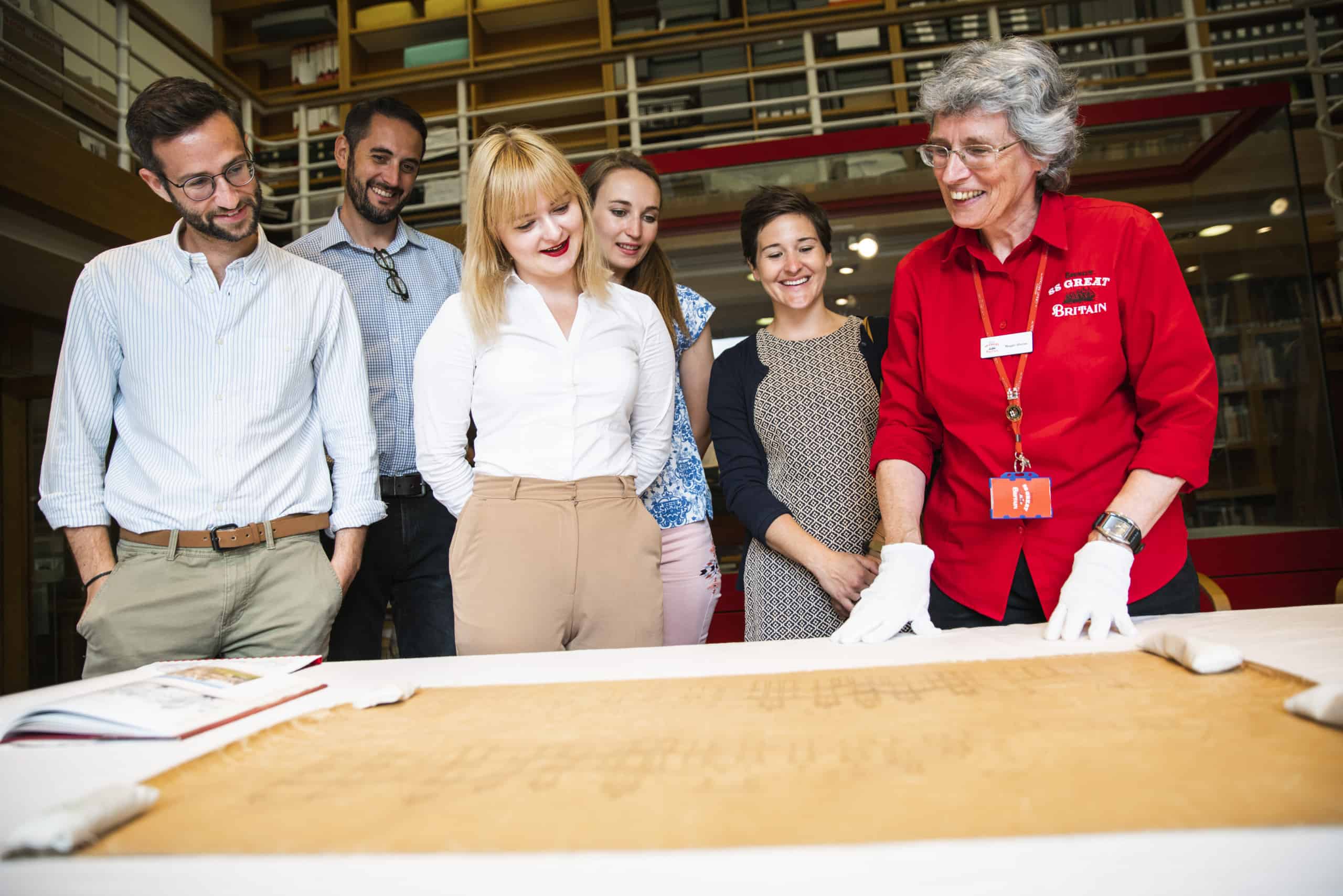With the opening of Being Brunel, we asked our volunteers what objects and displays are their highlights in the new museum.
LIZ SAYLES
Letter from a 10 year old boy, 3 January 1858 – (DM1306/11/23/64 University of Bristol Brunel Collection)
“The object that caught my eye is the letter from the ten year old boy to Isambard Kingdom Brunel with his suggestions of how the Great Eastern might be successfully launched. I would like to think that it brought a smile to Brunel’s face during what must have been an extremely stressful time! I also like that it shows how Brunel inspired the next generation of engineers in his own lifetime.”
JUDITH MASSEY
“My favourite item, at the moment, is the map showing the construction of the Great Western Railway from London, Paddington to Bristol. You can see the route that Brunel selected and some of the more difficult constructions. I travel the line often, but have never noticed things like the Wharncliffe Viaduct and the Maidenhead bridge (they cannot be seen from the train). The animations are well done and give the impression that Brunel is near you as he draws the images. Every time I watch it, I seem to see something new.”
ANDREW BALLINGER
Competition drawing by Isambard Kingdom Brunel – (DM1761.3 University of Bristol Brunel Collection)
“I have chosen Brunel’s drawing of the Clifton Suspension Bridge competition. I think it is important because it is his first solo project. It shows Brunel’s daring in designing a bridge that was of longer span that was thought possible, and he had the confidence that it would work.”
FINBAR CULLEN
“As a comparatively new (if not very young) volunteer, I have barely begun to get to know the collections. The things that impress me most about the archives are the (transcribed) diaries of passengers, but in the new museum the thing that struck me most was the chart of “Brunel’s Ships Compared”. The numbers appeal to the nerd in me and provide a handy comparison of the scale, cost, capacity, etc., of the Great Western, Great Britain and Great Eastern. As I get to know the collection better, I expect to find other favourites.”
PETER REVELLE
Photograph of IK Brunel and others watching the launch of the Great Eastern 1857-1858 (BRSGB 2014.04176)
“This photograph of Brunel was taken on 3 November 1857, when he was supervising the first, unsuccessful, attempt to launch the Great Eastern. At the time he was a sick man approaching the end of his life. One can see in his face the stress he is experiencing, but also determination. His stance and demeanour reveal his strengths and frailties. In my eyes he is seen to have almost heroic qualities.”
JANE VILLA
Brunel’s regulator clock, made by E J Dent 1845 (2016.06046 Clive Richards Brunel Collection)
“This clock was in Brunel’s office in Duke Street and he used it to set his watch by because it was so accurate. The appreciation by Brunel of its accuracy and good design to me epitomises the work of Brunel with his own innovative designs, attention to detail, striving for excellence, hard work and high standards.”
PETER BALE
“For me, one of my favourite exhibits can be seen on the mezzanine floor near the Great Eastern Funnel. This clever piece of framed technology takes the visitor through the stages of design, showing Brunel’s original drawings, coloured sketches and eventually morphs into a present day colour photo. These include a selection of his tunnels, bridges and ships, including his famous Box Tunnel and Paddington Station. What fascinates me is that this dynamic and versatile engineer wasn’t averse to experimenting, pushing boundaries and achieving results that we can see and admire today throughout a network of 21st century transport by road, rail and sea”
Author: Mollie Bowen, Collections Officer



